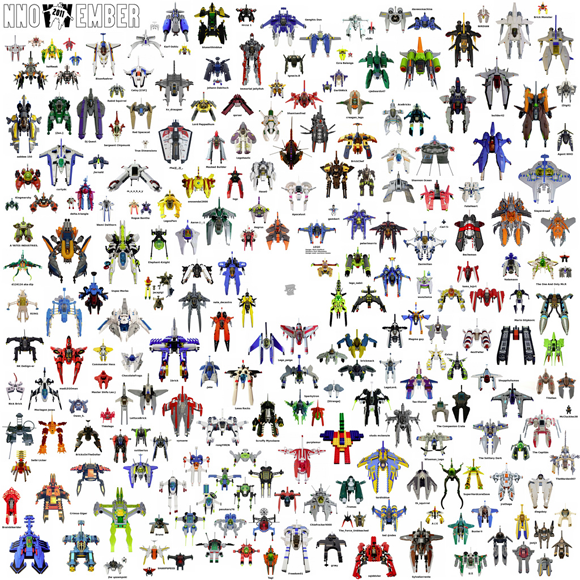bricks and games
truly transmedial to and fro

This is a moc [my own creation] ↑interpretation by afol [adult fan of LEGO] ↑m_o_n_k_e_y of the ↑Vic Viper. This fighter spaceship is a signature element of the ↑Gradius games, a series of scrolling shooters by Konami. The first game of the series was released in 1985, the latest in 2011. So over the course of a quarter of a century versions of the ship appear in more than two dozen computer games for different platforms.
Within the LEGO scene the Vic Viper has a ↑massive and very productive fandom, ↑originally inspired by ↑the late Nate ‘↑nnenn‘ Nielson. November, or, more correctly in this context: Nnovvember is the month of the Vic Viper. Here is ↑pasukaru76‘s 2011 compilation of 255 Vic Viper interpretations by 135 builders:

Last year there were ↑193 Vic Vipers by 88 builders. Clicking through to Flickr you can view the posters in their original size and have a detailled look on every ship.
But spillovers between computer games and the LEGO universe happen both ways—meanwhile with the fanbase directly involved. ↑LEGO CUUSOO is an online idea collection system asking fans ‘to submit and vote for their favourite ideas for new LEGO products.’ If a submitted idea gets a specific numbers of supporters, the idea will be reviewed by a committee at The LEGO Group ‘composed of designers, product managers, and other key team members.’ If the idea passes the committee it will be made into an official product. As I understand it, CUUSOO, which is still in beta, first was launched in Japan: ‘It took our first launch, the Shinkai 6500, 420 days to reach 1,000 votes in Japan. Hayabusa took 57 days to 1,000.’ On the international launch the critical number was raised to 10,000. As you might know the indie game ↑Minecraft has a substantial fanbase … the ↑LEGO Minecraft project reached 10,000 supporters on CUUSOO within 48 hours.
There’s yet more to and fro. Here’s a trailer for a computer game made into an animated movie by means of LEGO bricks and minifigures:
Just like to make the confusion of media and categories, the transgression of boundaries, perfect, the stop-motion movie is featured and distributed by ↑machinima.com. Although ‘↑machinima‘ means ‘the use of real-time 3D computer graphics rendering engines to create a cinematic production. Most often, video games are used to generate the computer animation.’

